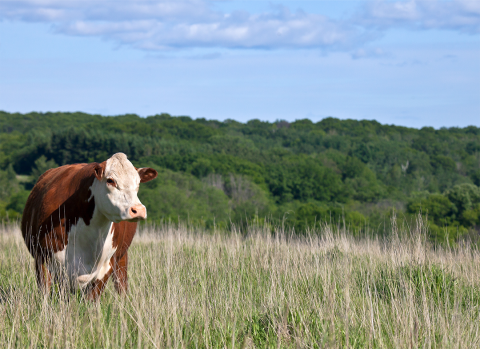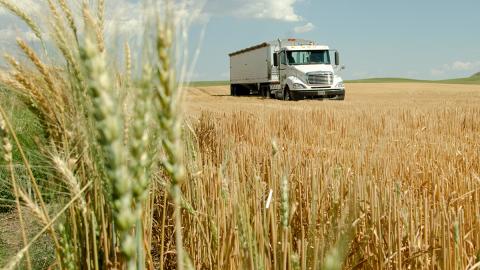Pasture and Forage Minute: Preparing for First Cutting Alfalfa, Small Grain Harvest Strategies
May 14, 2024
With the first harvest of 2024 beginning soon, producers should take this time to perform equipment maintenance and strategize the timing of alfalfa and small grains harvest based on operational needs.
Farmers Invited to Attend Roller Crimper Workshop June 5
May 10, 2024
This short program will include a roller crimper demo, discussion on what conditions must be met to be successful with this termination method, and insights from farmers on their experiences with crimping.
Pasture and Forage Minute: Annual Forage Webinar Series, Improving Alfalfa Stands
April 17, 2024
Extension educators introduce a new webinar series for producers interested in adding an annual forage rotation to their operation, plus insights on grazing spring cereal grains and options for thin alfalfa stands.

Pasture and Forage Minute: Preparing Your Operation for 2024, Planning Spring Annual Forages
January 23, 2024
Winter brings time to take stock of our current operations and plan for the future, which can make a significant impact on success in the upcoming year.
NU Horizon Genetics Now Supplies UNL-developed Small-grain Seed Varieties
July 13, 2023
NU Horizon Genetics will promote, market and commercialize the certified seed of wheat, barley and triticale varieties developed by UNL, including the recently released irrigated wheat variety Epoch.
Pasture and Forage Minute: Double Cropping Forages, Alfalfa Dormancy
March 21, 2023
In this installment: Strategies and tips for successfully double cropping annual forages this year, and a breakdown on what fall dormancy means for alfalfa growth during the next growing season.
Pasture and Forage Minute: Yucca Control and Fall Irrigation
October 24, 2022
Extension educators explain why winter grazing can be an effective tool to reduce yucca stands in rangeland and how to plan late fall irrigation in winter annual crops.
Pasture and Forage Minute: Grazing High Nitrate Cornstalks, Late Summer Weed Control
September 14, 2022
Extension Educator Todd Whitney reveals techniques to safely graze drought-stressed cornstalks — plus, more on late summer weed control and planting small grains for spring forage.






